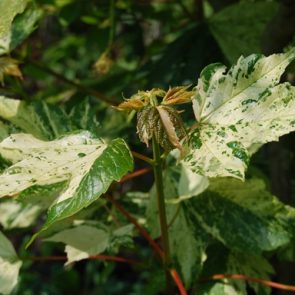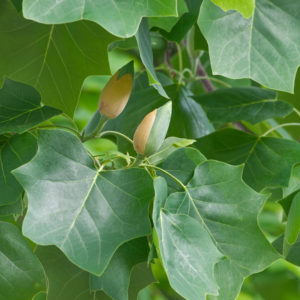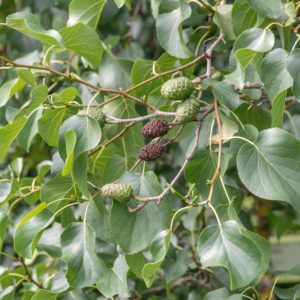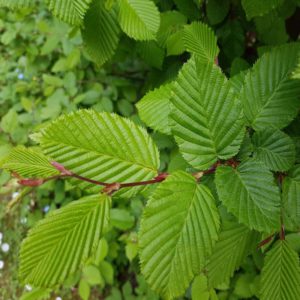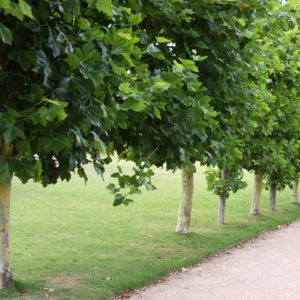Acer Leopoldii / Leopolds Maple
Price range: €250.00 through €950.00
Frequently Bought Together




Description
Quick Facts
- Common Name: Leopold’s Sycamore, Variegated Sycamore
- Botanical Name: Acer pseudoplatanus ‘Leopoldii’
- Plant Type: Deciduous tree
- Mature Height: 12-18m
- Mature Spread: 8-12m
- Flowering Period: April to May
- Flower Colour: Yellow-green pendulous clusters
- Foliage: Large palmate leaves, pink-bronze emerging, maturing to green with yellow-cream variegation
- Hardiness: RHS H7 (very hardy)
- Soil Requirements: Moist, well-drained, tolerates most soil types
- Aspect: Full sun to partial shade
- Maintenance: Low to moderate
Description
Discover the extraordinary beauty of Acer pseudoplatanus ‘Leopoldii’, a magnificent variegated sycamore that brings year-round colour and architectural presence to Irish gardens with its spectacular multi-toned foliage that changes dramatically through the seasons. This outstanding ornamental tree offers exceptional visual interest—emerging leaves unfold in stunning shades of pink, salmon, and bronze in spring, gradually transforming to green splashed and mottled with creamy-yellow variegation, creating a luminous effect that brightens the landscape from spring through autumn.
Throughout the growing season, this captivating tree displays its distinctive large palmate leaves that showcase an ever-changing palette of colours. The spring emergence is particularly spectacular, with new foliage appearing in rich pink-bronze tones that create a warm glow across the canopy. As the season progresses, the leaves develop their characteristic variegation—green backgrounds splashed, speckled, and marbled with creamy-yellow markings, with some leaves showing pink tints on their undersides. The irregular variegation pattern means no two leaves are identical, creating constant visual interest. In spring, pendulous clusters of yellow-green flowers add delicate beauty, whilst the attractive grey-brown bark provides winter structure.
Named after King Leopold of Belgium, this distinguished cultivar has been treasured since the 19th century for its exceptional ornamental qualities. Exceptionally hardy and vigorous, ‘Leopoldii’ thrives in Irish conditions, tolerating exposed sites, coastal winds, urban pollution, and a wide range of soil types including heavy clay. The robust nature and adaptability make this an excellent choice for challenging locations where other ornamental trees might struggle.
Create stunning compositions by planting as specimen trees in large lawns where the colourful foliage can be fully appreciated, or use in parkland settings and estate gardens. Magnificent in mixed woodland plantings where the variegated foliage provides bright contrast against darker evergreens, or as focal points in large borders. The luminous foliage works beautifully with purple-leaved trees like copper beech, or combined with spring-flowering magnolias and cherries for extended seasonal interest.
Caragh Garden Notebook
Planting: Space trees 10-12m apart for groupings, or allow 12-15m for specimen planting to accommodate mature spread. Plant bare-root trees from November to March, or container-grown specimens year-round. Dig holes twice the width of the root ball and incorporate organic matter. Plant at the same depth as the nursery soil mark, ensuring the root flare is visible. Stake young trees for the first 2-3 years. Water thoroughly and mulch around the base.
Soil Preparation: Thrives in a wide range of soil types with pH 5.5-8.0, from heavy clay to sandy loam. Prefers moist, well-drained, fertile conditions but tolerates both damp sites and periodic drought once established. Exceptionally adaptable to challenging soils, urban conditions, and coastal exposure. Incorporate organic matter to improve soil structure and fertility. Tolerates alkaline soils better than many maples.
Container Growing: Not suitable for long-term container growing due to size and vigorous root system. Young specimens can be grown temporarily in very large containers (minimum 80cm diameter) using soil-based compost, but should be planted out within 2-3 years for best long-term health and to achieve full ornamental potential.
Seasonal Care: Requires minimal pruning—simply remove any dead, damaged, or crossing branches in late autumn or winter when fully dormant. Remove any branches showing plain green reversion immediately to maintain variegation. Avoid pruning in spring when sap is rising. Apply slow-release balanced fertiliser in early spring for young trees. Mulch annually with organic matter to retain moisture and suppress weeds. Water young trees during prolonged dry spells for the first 2-3 years until well established.
Propagation: Propagate by grafting onto Acer pseudoplatanus rootstock in late winter (specialist technique). Cuttings are difficult and unreliable. Seed-grown plants will not come true to type and will revert to plain green sycamore. Most gardeners prefer to purchase nursery-grown grafted specimens for guaranteed quality, true-to-type variegation, and predictable characteristics.

